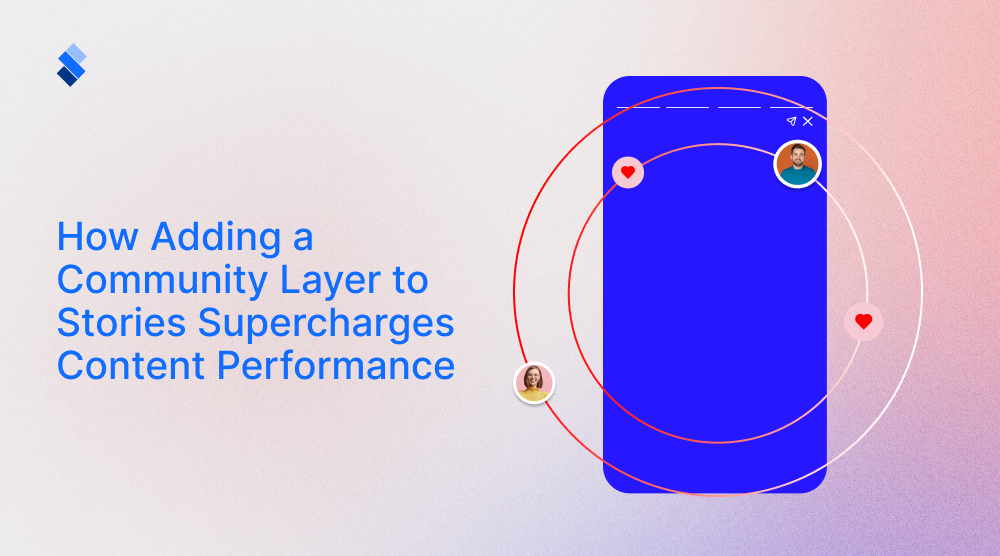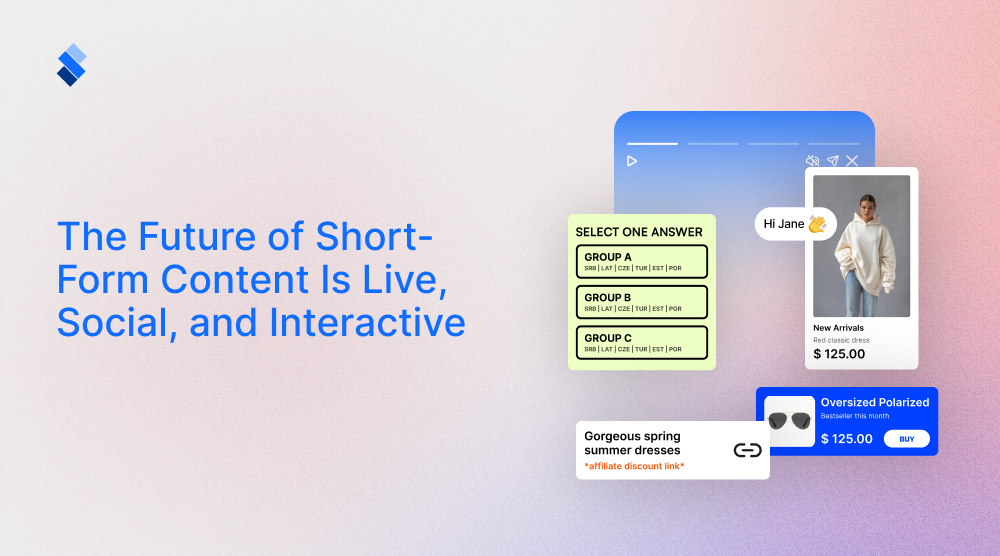Bounce rate and how to keep it low
In order to have healthy website traffic and ensure decent conversion rates you need to understand the bounce rate and how to keep it low.

Every website manager wants people to enjoy their websites. After all, most websites are products of hard work and require constant content updates to keep engaging. Unfortunately, it isn't uncommon for people to leave your website, even though they found it interesting enough to visit. The worst thing to do here is to put this fact aside and keep on doing as you usually would. Instead, you need to understand why this is happening, and whether there is something you can do to prevent it. So, let's take a more in-depth look at website bounce rate and how to keep it low.
Understanding the bounce rate
Bounce rate is a fairly simple marketing term for the percentage of people that leave your website soon after visiting it. For one reason or another, a part of your audience will find your website not worth going through. After all, it is impossible to entertain and please everyone. But, if a significant percentage of your audience leaves your website, even though they were interested enough to visit it, you may be doing something wrong.
Acceptable bounce rate
To keep your bounce rate relatively low, you first need to know what the acceptable bounce rate is for your website. Depending on the type of content and its purpose, different websites have different acceptable bounce rates. And if you aren't aware of yours, you might work yourself up over nothing.

The general rule of thumb is that the larger your audience is, the bigger the bounce rate you are going to have. Niche websites that cater for a specific demographic should strive to have between a 10-20% bounce rate. After all, you'd expect that people visiting a niche website will have a clear goal for doing so. On the other hand, websites that cater to a larger audience should be satisfied with a bounce rate between 50% and 70%. If you manage to bring it down between 30% and 50% you should be thrilled. But, anything above 70% should be a cause for concern.
How to keep it low
The reasons behind a high bounce rate are plentiful and quite diverse. The poor website design, subpar responsiveness, boring content you present... All could be triggers for your visitors to leave. Fortunately, there are effective ways to reduce your bounce rate and keep it low. All you need to know is how to identify and solve the problem at hand.
Outline who you are trying to engage
A good starting point for reducing your bounce rate is to identify who you are trying to engage with your website. A lot of web site has a high bounce rate simply because they failed to tailor their website to their audience. They might have even managed to properly market their website, which is why they have a decent amount of visitors. But, it can be the case that you are simply drawing in the wrong kind of crowd.

To reduce the bounce rate, you need to fully understand who you are trying to engage. That way you can take further steps in optimizing your online presence to that it engages the right audience. All of your efforts towards improvement will be for nought if you don't know who you are trying to reach. But, once you do, you can optimize your content, your style and your tone so that it draws in the right audience, and keeps them interested.
Outline why your visitors are leaving
The second thing to do is to try and outline why your visitors are leaving. This, unfortunately, is seldom easy or straightforward. In most cases, there isn't a single reason why your visitors choose to leave. After all, there isn't a single reason why they came to your website in the first place. Instead, there is usually a multitude of reasons for you to consider.
The best course of action here is to closely monitor the user journey on your website. If they leave within the first couple of seconds, there is probably something in the design of your website that steers them away. If it takes them a bit longer, the case may be that your content is interesting, or relevant to what they are looking for. By closely monitoring the user journey you can identify the leaving points, and improve upon them to keep viewers aboard.
Design an engaging UX
In modern-day and age you will have a hard time maintaining an interested customer base if you solely rely on passive content. Yes, a well-written blog post will be interesting to some of your viewers. But, even well-written posts can be improved upon with more dynamic content. What you need to avoid is considering your viewers as passive observers of your content. Instead, consider them as an active part of the user experience that you facilitate with your website. Introduce interactive elements like web stories or images to help elaborate on what the blog posts have to say. The more you can enrich the experience that your users have on your website, the less likely they are to leave.
Keep in mind that designing a decent UX requires a fair bit of testing. You need to closely monitor what your users do on your website, and understand why they've visited it. And you may need to hire a professional content creator in order for your content to be up to standard. Only then can you look to make substantial changes that will improve their overall experience.
Include clear CTAs
People don't usually visit websites solely for research. In fact, the main reason why they are performing any form of research is usually to solve a problem. From finding a place to go on a vacation, to learning how to fix a roof leak. Solving problems is one of the main reasons for reading online articles. So, if you do provide a service and/or a product with your website, don't wait to look to include a clear CTA.

CTA stands for Call To Action. It effectively means that you make a clear offer to the reader and invite them to do business with you. Properly timing and designing your CTA does not only help with conversation rates but can also help with reducing bounce rates. Namely, if the viewer feels that you don't present solutions to their problem, they are likely to look for websites that do. So, even though your blog post is well written, it should include a clear CTA. That way, the users will have a clear incentive to stay on your website once they understand the problem at hand.
Check readability
Poor grammar and poor phrasing can easily drive away otherwise interested customers. We are all quite sensitive to grammar mistakes. And with tools like Grammarly, there is hardly a reason for you to have them on your website. So, always make sure to perform a grammar and readability check before you post an article.
Optimize landing pages
The landing page of your website is, arguably, the most important page you have. After all, it (or they if you have multiple) will be the most commonly visited page on your website. Therefore, it is in your best interest to optimize it as much as possible. No aspect of it should feel tacked on or redundant. Before you put any bit of content, you should clearly outline what purpose it serves, and how it helps your landing page.
Make use of visual content
We've already mentioned that written content, regardless of how good it is, can only garner so much attention. Modern viewers have a relatively short attention span. This is why, even among interested viewers, only a certain percentage will read through an entire article. But, luckily, you do not have to solely rely on written content. Visually rich content tends to do much better than written content. Yes, it is more difficult and often more expensive to create. But, if your bounce rate is high, even though viewers are interested in your topics, it might just be the solution. Videos, animations, images, comics and web stories. All present viable options for you to present content. What's important is to keep your brand in mind, and find a content creator that can help you design the right content for your website.

Regularly update your content
You cannot hope to have an engaging website if you do not update your content on a regular basis. This goes for both the subjects you cover and the type of content that you use. A good idea is to follow marketing trends and see which innovations you can bring when it comes to content creation. Ideally, every update and innovation that you bring will be in line with your brand. That way your viewers will appreciate the continuity you have with your brand, while also admiring the fresh content that you put out.
Optimize internal linking
Every page and post that you put on your website should have a natural connection to the rest of your website. This is usually done thematically by choosing subjects that are related to what your website is about. But, it is also done through proper internal linking. Namely, each webpage should have multiple links to other pages on your website. That way, the reader will have a natural incentive to keep reading your website, and not leave once they are done with the article.

Proper internal linking entails not only linking different web pages but also checking whether the links and functioning well. If there are any dead links, you need to either revive them or delete them completely. A single dead link can be a reason for leaving the website. This is why having well functioning, and well-optimized links are quite useful for reducing your bounce rate.
Conclusion
By now you should have a fairly good idea of bounce rate and how to keep it low. If you understand your customer base, and their online experience, you can look for reasons why your bounce rate may be high. Once you do that, it is a matter of research and testing to figure out whether you can improve it. Keep in mind that outdated content is the common cause of a high bounce rate in modern marketing. And seeing that platforms like StorifyMe allow you to create highly engaging content, there is little reason to only rely on written posts. Try to follow ongoing marketing trends and don't shy away from experimenting. As long as your innovations are in line with your brand, you are likely to improve your bounce rate.







